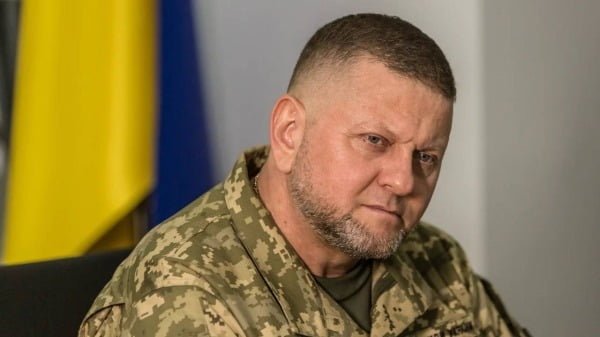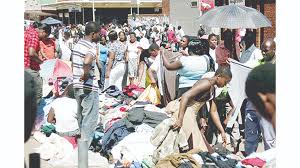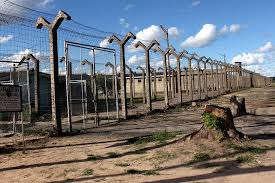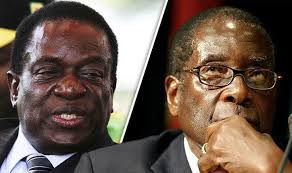Ukraine has lost the war. That is not fake news from social media. It is not propaganda from Russian media. It is what follows deductively from statements made by the commander-in-chief of the Ukrainian armed forces, General Valery Zaluzhny, in a November 1 interview with The Economist.
In that interview, Zaluzhny assesses that “we have reached . . . stalemate.” As for Ukraine’s chances of emerging from that stalemate victorious, his prognosis is that “There will most likely be no deep and beautiful breakthrough.”
An admission of a stalemate is not an admission of defeat. But a stalemate entails a long war of attrition. And in a long war, according to The Economist, Zaluzhny “acknowledges [that] Russia has the advantage.” “There is no question in General Zaluzhny’s mind,” The Economist reports, “that a long war favors Russia.” Zaluzhny says that “The biggest risk of an attritional trench war is that it can drag on for years and wear down the Ukrainian state . . .. sooner or later we are going to find that we simply don’t have enough people to fight.”
A close aide to Ukrainian president Volodymyr Zelensky told Time magazine, in an interview published the same day, that even if the United States gave Ukraine all the weapons it needed, they “don’t have the men to use them.”
From those statements it follows that Ukraine has lost the war. The war has reached a stalemate. A stalemate entails a long war of attrition. A long war of attrition favors Russia because Ukraine will run out of men.
In a long essay published simultaneously by The Economist, Zaluzhny explains in more detail that a long entrenched war favors Russia: “the war at the present stage is gradually moving to a positional form, a way out of which in the historical retrospect has always been difficult for both the Armed Forces and the state as a whole.
At the same time, the prolongation of a war, as a rule, in most cases, is beneficial to one of the parties to the conflict. In our particular case, it is the Russian federation, as it gives it the opportunity to reconstitute and build up its military power.”
Zaluzhny goes on go explain that a war of attrition “leads to the lack of Ukraine’s ability to achieve superiority over the enemy in reserves by increasing their number” because “[c]ompared to Ukraine, the Russian federation has almost three times more mobilization human resources.”
And it is not only in the number of troops that Russia benefits from a superiority that will wear Ukraine down. US led sanctions were intended to exhaust the Russian economy until it was incapable of funding its war. But, in his essay, Zaluzhny writes that “Russia at this time retains and is able to maintain a superiority in weapons and equipment, missiles and ammunition for a considerable time, while the capabilities of the military industry are increasing, despite the introduction by the world’s leading countries of unprecedented sanctions against the aggressor state.”
Russia has a numerical advantage in equipment and ammunition and its production is increasing. Whereas, “[t]he Armed Forces of Ukraine are provided with extensive materiel and logistical assistance by Partner Nations, however, given the increased intensity of average daily missiles and ammunition consumption, it is not possible to accumulate these funds in the required volumes.”
Russia has won the war because it has settled into a stalemate, a long war of attrition in which, over time, Russian numerical superiority in men and weapons will outlast Ukraine and wear them down.
But it is important to analyze, not only the assessment that Zaluzhny published, but also the question of why he chose to publish on so public a Western pulpit.
In the Time article published on the same day, some of Zelensky’s “closest aides” say that the president is in conflict with his generals and that, “hardened” into a position that no longer reflects the reality on the battlefield, he is not listening to them. Zelensky’s long expired belief “in Ukraine’s ultimate victory over Russia . . . worries some of his advisors” because it “verg[es] on the messianic” and hinders their ability to be flexible and adapt their strategy to the evolving reality. Zelensky “deludes himself.” His close aide complained that “We’re out of options. We’re not winning. But try telling him that.”
Zelensky is not listening to his generals, and that is hurting the armed forces and the people of Ukraine. Perhaps since Zelensky won’t listen to his top general, his top general talked to Zelensky’s Western backers. Perhaps if Zelensky won’t listen to Zaluzhny, he’ll listen to Washington who listened to Zaluzhny. Zaluzhny’s word carries weight. He is a very respected general: even by Russia.
In neither his interview with The Economist nor his accompanying essay, does Zaluzhny ever mention Zelensky. He is talking past the president, not to him.
Zaluzhny’s message to Time’s audience in the political West may also be intended as a way of getting the message through to Zelensky. The full message is devastating. The headlines focus on the word “stalemate.” But, as Kremlin spokesman Dmitry Peskov responded to Zaluzhny’s assessment, “No, it has not reached a stalemate.”
The diagnosis of stalemate relies on a misunderstanding of the different strategic approaches to the war by the two armies. The Economist illustrates the stalemate by saying that “Five months into its counter-offensive, Ukraine has managed to advance by just 17 kilometers. Russia fought for ten months around Bakhmut in the east “to take a town six by six kilometers”.
But that measures the results by territory taken. That is Ukraine’s goal because they are trying to recapture land that Russia has taken and push Russia back out of its borders. But Russia is not fighting for territory but for victory over the Ukrainian armed forces.
Victory for Russia, for now, is measured, not in territory, but in the attrition of Ukrainian men, equipment and artillery. By this metric, the war is not a stalemate. Russia has acquired little land, but they are attaining their goal. Since Ukraine began its counteroffensive, the loss of advanced equipment, including jet fighters and NATO supplied tanks, has been staggering, and the loss of lives horrifying. Ukraine is running out of weapons and, as Zaluzhny and Zelensky’s aides have said, they are running out of men even faster.
But Russia is also winning land. The attrition of the Ukrainian forces has created a vulnerability that Russia now seems to be exploiting to launch their own version of a counteroffensive. They are methodically advancing on a number of strategic fronts. The most important may be Avdiivka, the defeat of which could open the door to the Donbass for Russian forces, allowing Russia to solidify the borders of its newly annexed territories.
Ukraine is desperately redeploying troops from the southern front, suggesting that they are running out of men and lack reserves to send into Avdiivka and that the loss of key strategic land may be imminent.
Zaluzhny opposes Zelensky’s strategy of spending lives on Avdiivka as he opposed his strategy of spending lives on Bakhmut. But Zelensky is not listening. That may be why Zaluzhny took his message to Zelensky’s patrons. The attritional war now focused on Avdiivka could lead to the running out of men and the loss of pivotal land that could signal the beginning of the realization that Ukraine has lost the war.
Source Zbcnews










